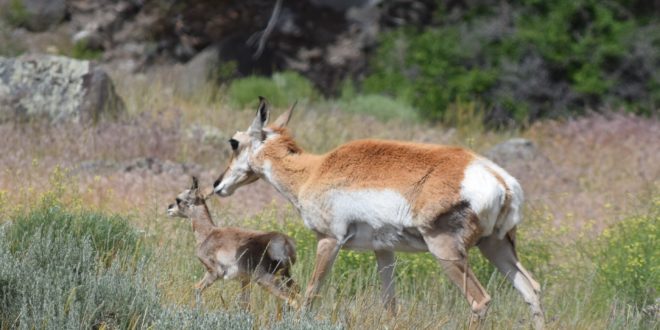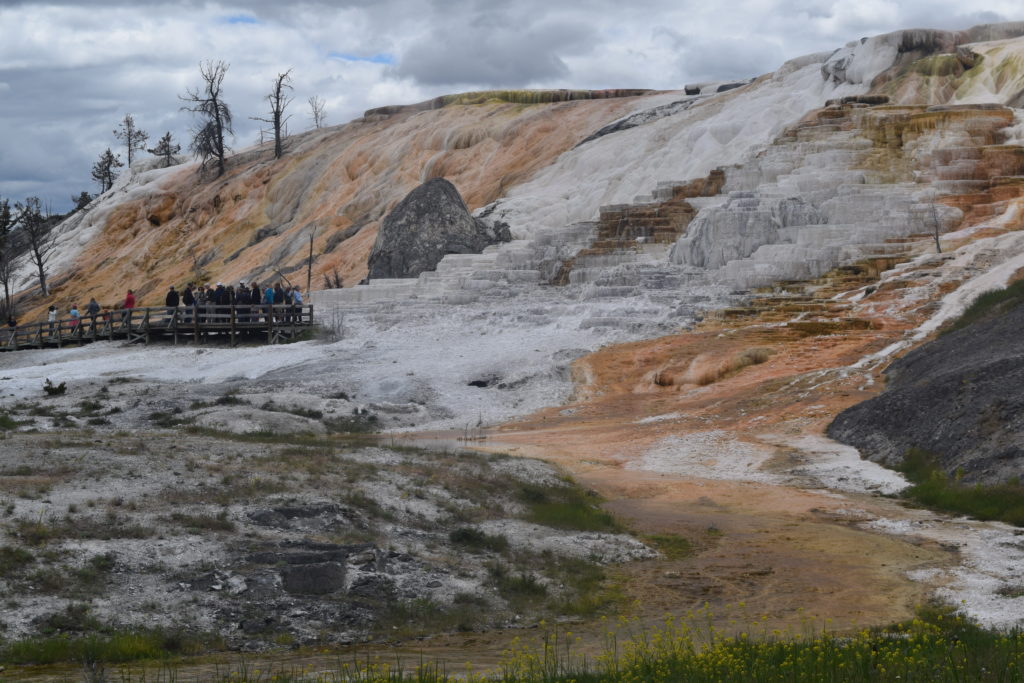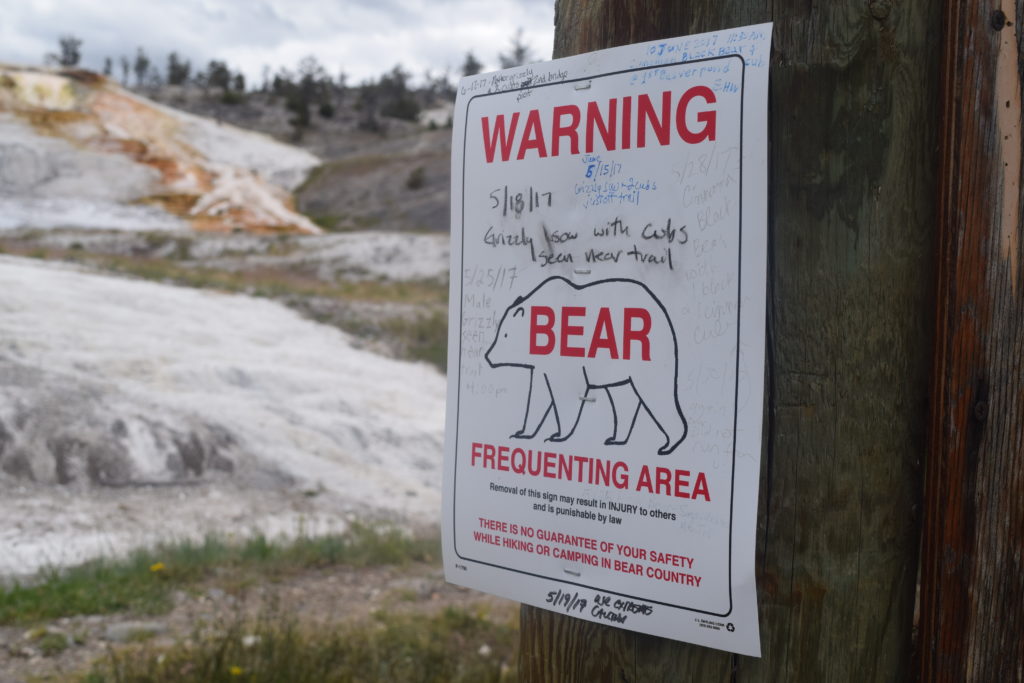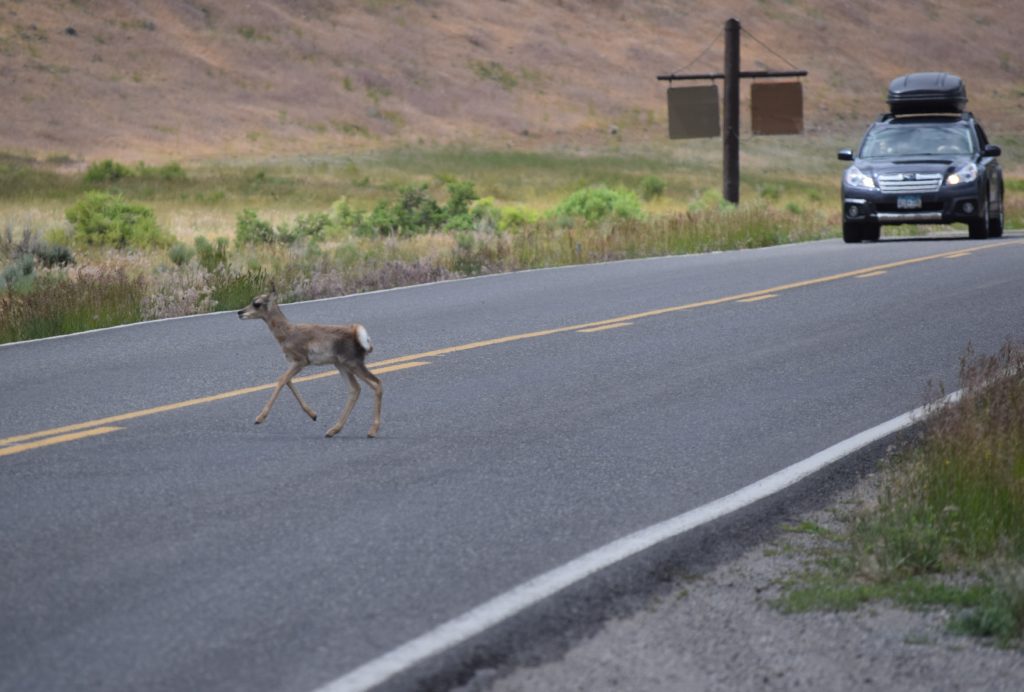Sundays are the perfect day for messing around in the park. Yellowstone National Park, that is.
The plan was to get a late-morning start out of Livingston. I brought along a friend who doesn’t make the trip to the park very often, even though Livingston is only 50 fast miles from the North Entrance. Some locals seem to think a day trip into the park is too far—and at least part of the year, too much of an ordeal.
The plan was to head to Canyon, see the waterfalls after a long hiatus since last fall, and to check out Xanterra Parks and Resorts’ new décor in the dining facilities in the Canyon Village area. Gone is the old-school cafeteria, replaced with some “fast casual” options, Xanterra’s Marketing and Sales Director Rick Hoeninghausen said.
But we were delayed and slightly detoured by minor car trouble. Rather than risk more trouble farther from home, we opted to hang around Mammoth.
We parked by the gas station and walked toward the Mammoth Hot Springs Terraces. The boardwalks and parking lots were full of people and vehicles. We started up the Beaver Ponds trail. The trail makes a five-mile loop in the hills behind the Mammoth developed area. We weren’t equipped to hike, but figured we’d stroll up the trail a bit and look at the wildflowers.
One flower we saw too much of is a non-native plant called dalmation toadflax. You see it all over the Mammoth area, a tall, yellow, snapdragon-like flower. It’s considered a noxious weed, and it can crowd out native plants that are important food sources for various wildlife. And it’s harmful outside the park to cattle producers, crowding out more nutritious feed.
Apparently it’s a native of the Mediterranean, introduced in the U.S. as an ornamental in the late 1800’s.
The lupine was beginning to bloom, a purple flower on a stalk. The arrowleaf balsamroot is starting to dry out already in some places—it’s a bright yellow flower prone to covering hillsides. Its arrow-shaped leaves are large and distinctive.
We came to a small bridge over Clematis Creek. We looked at the flowers, listened to the splash of the fast-moving creek, and greeted a few groups of hikers. We weren’t carrying water or bear spray, so weren’t comfortable getting too far up the trail, even with all the other foot traffic. Bears use trails just like people do and with berries not quite ripe yet, they’re probably hungry. And who wants to meet a hungry bear?
So we decided to call it a day and head back down the hill to Gardiner and points north.
But just before we reached the North Entrance, stop the car! We spied an adult female pronghorn and the teeniest, tiniest baby pronghorn I’ve ever seen. It was darker than its mom, who had the distinctive, nearly orange coloring. We theorized that the babies are darker when they’re young to make them less visible to predators.
The doe started walking, seemingly expecting the fawn to keep up. They were on the east side of the road and mama seemed anxious to cross to the west side. There were a few cars on the road, but many were not stopping, just driving through slowly. She got to the road and skipped across, her little one making the crossing easily, too. Mom seemed more comfortable on the west side of the road and stopped long enough for her little one to nurse.
The show over, the traffic moved on. We got back in the car and headed to Gardiner for a late lunch.
 Yellowstone Insider Your Complete Guide to America's First National Park
Yellowstone Insider Your Complete Guide to America's First National Park









You must be logged in to post a comment.